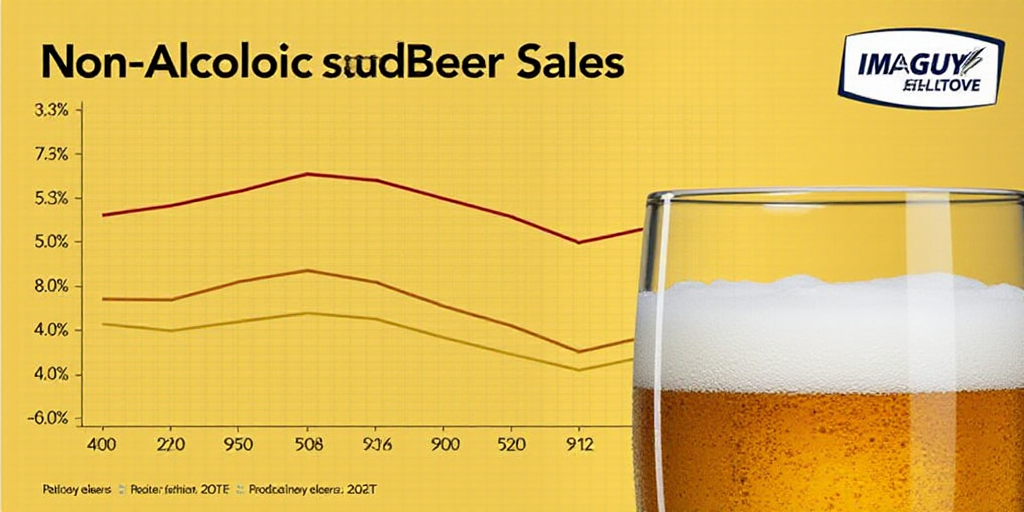Introduction to Non-Alcoholic Beer Growth
According to market research firm IWSR, non-alcoholic beer is projected to see an average annual growth of 8% until 2029, while overall beer sales are expected to decline by an average of 2% during the same period.
Non-Alcoholic Beer’s Rising Popularity
IWSR forecasts that non-alcoholic beer will become the second largest category by volume in the global brewing market, trailing only lager, by 2025. In 2024, non-alcoholic beer volume increased by 9%, while traditional beer sales fell approximately 1%.
Although non-alcoholic beer accounts for just 2% of the global market, its growth trend remains positive since 2018. Lager continues to dominate the sector with a 92% share, but its growth rate is slower compared to non-alcoholic beer.
Factors Driving Non-Alcoholic Beer’s Growth
IWSR’s Operations Director, Emily Neill, attributes the non-alcoholic beer category’s growth to demographic shifts, economic growth patterns, and a long-term moderation trend in developed markets.
Senior Econometrician at IWSR, Martin Belchev, adds that the “0.0%” label has gained momentum due to moderation trends, even in developed markets where such categories typically face more resistance.
“We’re seeing some volume shifting from more established categories to non-alcoholic beer, and in some cases, even from lager to non-alcoholic beer,” Belchev explains.
“It appears to be a more normalized drink, especially for working and socializing,” he adds.
Consumer Behavior Shaping the Market
Experts highlight that young consumers’ behavior is a significant driver of this shift. Generation Z and subsequent generations tend to drink less and exhibit a more conscious approach towards consumption.
Older consumers are less likely to moderate occasional drinking but more inclined to stop drinking altogether or opt for non-alcoholic versions.
This changing consumption pattern has prompted brands to innovate, offering enhanced flavor, presentation, and variety.
In the past five years, major brewing groups like Anheuser-Busch InBev, Heineken, and Diageo have introduced at least one non-alcoholic beer option.
Short-term Challenges for the Alcohol Beverage Market
According to Martin Belchev in a recent podcast, both alcoholic beverage sales and non-alcoholic beer will face significant pressure in the short term.
This is due to a complex economic environment and high trade uncertainty, with tariff threats looming over various products.
Key Questions and Answers
- What is driving the growth of non-alcoholic beer? Younger consumers’ changing drinking habits, increased consciousness about consumption, and a long-term moderation trend in developed markets are key factors.
- How does the global market share of non-alcoholic beer look? Non-alcoholic beer makes up approximately 2% of the global market, but its growth is outpacing traditional beer sales.
- What challenges does the alcoholic beverage market face? The industry is dealing with a complex economic environment and trade uncertainties, including potential tariffs on various products.






